Is A Prime Lens Right For You?
By Scott Umstattd
|
First, let’s answer the most basic question: what is a prime lens? It is a lens that does not zoom in or out. Its focal length is fixed. That's why they are sometimes called fixed lenses or fixed focal length lenses. Everything about your choice of gear depends on your intentions. If you are a wildlife photographer, you need a telephoto or super-telephoto lens. You simply cannot take a picture of a lion or a bird with a wide angle lens unless you are a few feet away from your subject. |
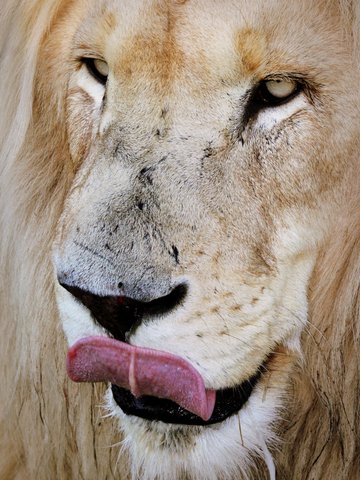 Photo Credit: Sias van Scalkwyk |
Immediately, you can see why a wide angle lens is not the right choice for wildlife photography. If you are taking pictures of a lion from a few feet away those may be the last pictures you take. And birds don’t generally let you walk up to them.
So, what subjects or situations demand that you use a fixed lens? When is a fixed lens the best or only lens option? And finally, is it necessary to even have a fixed lens?
5 Tips About Prime Lenses
Photography is all about trade-offs. For example, if you want to take a picture in low light you can increase your ISO and risk having noise ruin your picture. Or, you can use a long shutter speed and risk having blurry pictures. Or, you can open your aperture to its widest setting. But a lens that has a wide aperture can cost you more money.
Here are five tips that weigh the balance to help you determine if a prime lens is right for you and your photography needs.
1. Prime Lenses Are Inflexible
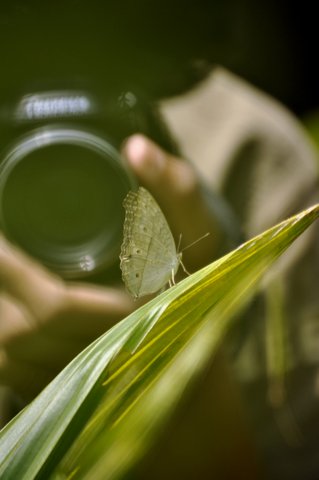 Photo credit: Sreeize |
If you are shooting with an 85mm fixed lens every shot you take will be at 85mm. This is neither good nor bad. It just is. It can be a good thing because it will force you to get creative. It will force you to move around a room to get the best composition. It can awaken ideas for your photography that would otherwise remain dormant. A fixed focal length lens can be a bad thing because if you cannot move then you are stuck with whatever focal range you are using. Tough cookies trying to get that close up of a child’s face if you are on the other side of the room and you have a wide angle prime lens. |
2. Prime Lenses Have Better Glass
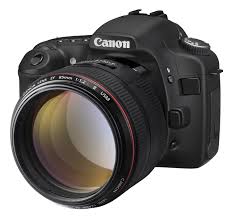
A fixed focal length lens will take pictures that are technically better than zoom lenses. Since fixed lenses don’t zoom they don’t need the extra mechanics needed that allow a zoom lens to go from wider to tighter focal lengths. Because fixed focal length lenses don’t have these extra zoom mechanics built into them, the space inside the lens can be dedicated to glass quality. Because of this lens manufacturers are able to make fixed lenses that perform at the highest levels of quality. Fixed focal length lenses don’t have the image distortion that zoom lenses have.
3. Prime Lenses Have Wider Apertures
Fixed lenses have wider apertures. Lens makers take advantage of the extra space inside the prime lens body to create lenses that shoot with low and sometimes very low apertures. This is extremely important with regard to image quality; especially in low light situations. Low light photography is arguably the best reason for using a fixed lens.
4. Primes Have Better Bokeh
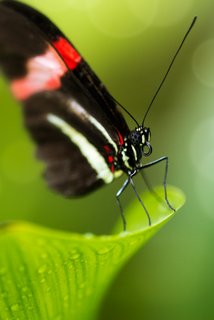 Photo credit: Andreas Krappweis |
Bokeh is better with prime lenses. Creating background blur, or bokeh, is another highly attractive quality that most fixed lenses possess. This is extremely advantageous when objects in the background are close to your subject. By opening your aperture (using a low f/stop) you can isolate your subject by negating distracting things in the background. If your subject is far enough away from those distracting background things, this is not nearly as important because those background distractions will naturally be blurred out due to their distance from your subject. |
5. Primes Are Perfect For Portraits
|
Add up all of the above points and you begin to understand why a fixed focal length lens makes an ideal choice for portrait photography. Image quality, bokeh, low light performance all add up to fixed lenses being ideal for portraits. In most cases when you are taking a portrait you have the time and space to set up your shot. If you are not close enough to take a good portrait, simply move closer. If your client/subject has agreed to have their portrait made they will allow you to move around while they literally sit and wait for you to get in an ideal position. |
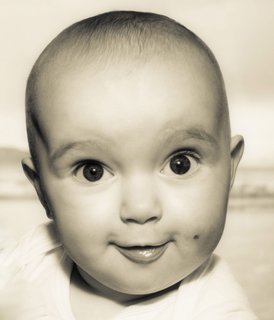 Photo credit: Ben Earwicker |
Photography's Constant Trade-Off
Fixed focal length lenses will allow you to take pictures that are more technically accurate: less or no distortion and aberration, more sharpness from corner to corner and better color rendition. But, you may lose opportunities because you cannot compose your shot with a prime lens.
If you only use fixed lenses you will be changing lenses a lot and that can damage your camera (and lenses) especially if you are shooting outdoors or in otherwise dusty, dirty and wet environments.
How I Use My Prime Lenses
For me, I bring out my prime lenses when I have a specific need. If I know I will be shooting in low light, I will use a prime. I will accept going in that I will be doing a lot of moving as a trade off. I also will use a prime lens if I am doing a planned portrait of someone. In portrait photography I want to make sure that I can get the best possible account of my subject and prime lenses will allow this. I will also use a fixed lens if I am shooting video with my DSLR. But that’s another story. You can read my thoughts about DSLR and video here.
Your Prime Lens Options
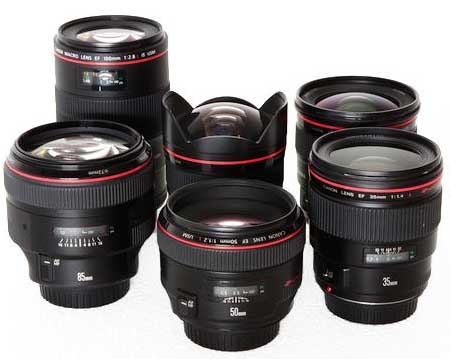
Fixed lenses cover the entire focal range you will need. You can get wide angle fixed lenses. You can get general purpose focal lengths from fixed lenses and you can get telephoto and super-telephoto fixed lenses.
Fixed lenses can cost a lot of money. Lenses like the Canon EF 50mm f/1.2L USM and the Canon EF 85mm f/1.2L USM are incredibly dynamic lenses that bring back some of the best pictures with regard to image quality. But these are very expensive lenses. But don’t fret, you can still get great images from fixed focal length lenses without breaking your budget.
The Canon EF 50mm f/1.8 and Canon EF 85mm f/1.8 have wide apertures and take great pictures at half or more than half the cost of the others lenses I just mentioned. One of my favorite prime lenses is the Canon EF 200mm f/2.8L USM lens. It’s not a large lens compared to its zooming 70-200mm brothers and you get f/2.8 at 200mm.
This lens, for me, is an excellent lens for many occasions, including event portraits when you may not have the opportunity to pose your subject or if you cannot get close to your subject as was the case in this portrait of an Indian woman at the Taj Mahal in Agra, India.
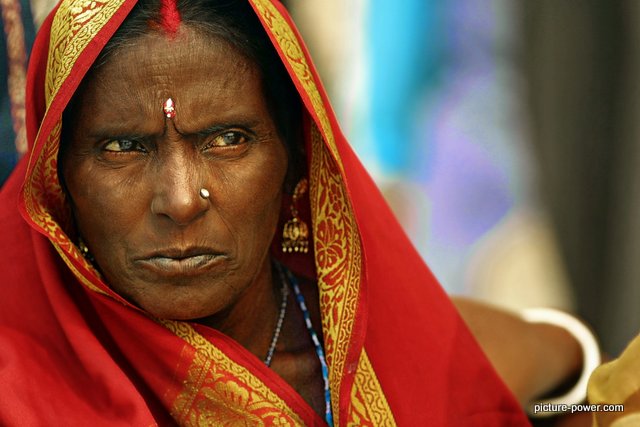
If you want to get serious about your wildlife photography, the Canon EF 300mm f/2.8L IS USM or the Canon EF 400mm f/2.8L IS USM will give you incredible pictures of lions without risking your life.
So, Do You Need A Prime Lens?
The answer is up to you. You know how, why and where you take pictures. If you are in doubt about your need for a prime lens, I suggest getting the Canon 50mm f/1.8 or the Canon 85mm f/1.8 because they are not that expensive. Then compare the quality of one of these lenses to the quality of your zoom lenses and determine if the improved quality is worth the trade offs.
Do you have a fixed focal lens? How do you use it? Do you only shoot with primes? Let me know why and share a comment below.
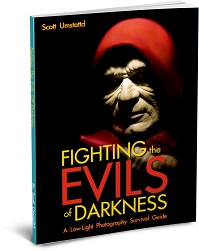
Want to learn how to fight the evils of darkness in all of your photography?
Download my e-book Fighting The Evils of Darkness: A Low Light Photography Survival Guide completely free!
Other Picture Power Articles You May Enjoy
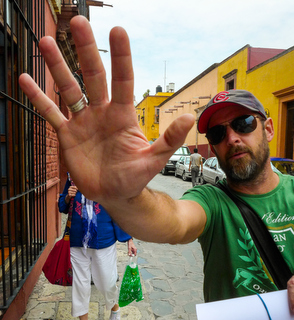
Hi there! I'm Scott. PTMY. Photography is a constant challenge and there is always something to learn - if you want to learn. For those that do want to learn, I created Picture Power as a resource for you to sharpen your photography skills. If you don't find the answer you're looking for just let me know and together we'll find a way to ignite your inner superhero photography genius. Contact me













New! Comments
Let me know your thoughts about this site or what you've just read. Leave a comment in the box below.